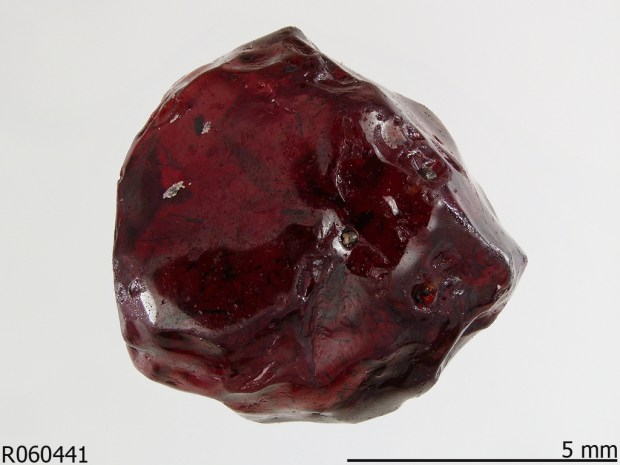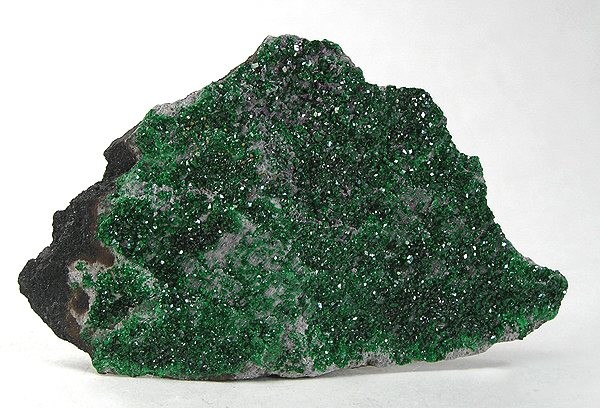This is a special type of garnet called pyrope garnet. The name comes from the Greek pyro, meaning fire. Pyrope and other members of the aluminum part of the garnet group have a higher specific gravity and hardness, and are usually red. Calcium garnets like the previously mentioned andradite and uvarovite are the ones that are usually green and have a lower hardness and specific gravity.
Pyrope garnet is difficult to distinguish from almandine, but pyrope usually has fewer flaws and inclusions. However, garnet jewelry is usually almandine garnet because almandine is much more common and inexpensive.
If you would like some pyrope garnet it can be found nearby in Kansas, all around the Nemaha Uplift (or Nemaha Ridge), which is in the area between Salina and Manhattan, and extending south into Oklahoma. Basically, garnets are found anywhere near previous volcanic activity. The one pictured is from Apache County, Arizona. They are also found in Africa and other places. For lots and lots of information about this particular specimen, see its page on the RRUFF here.




